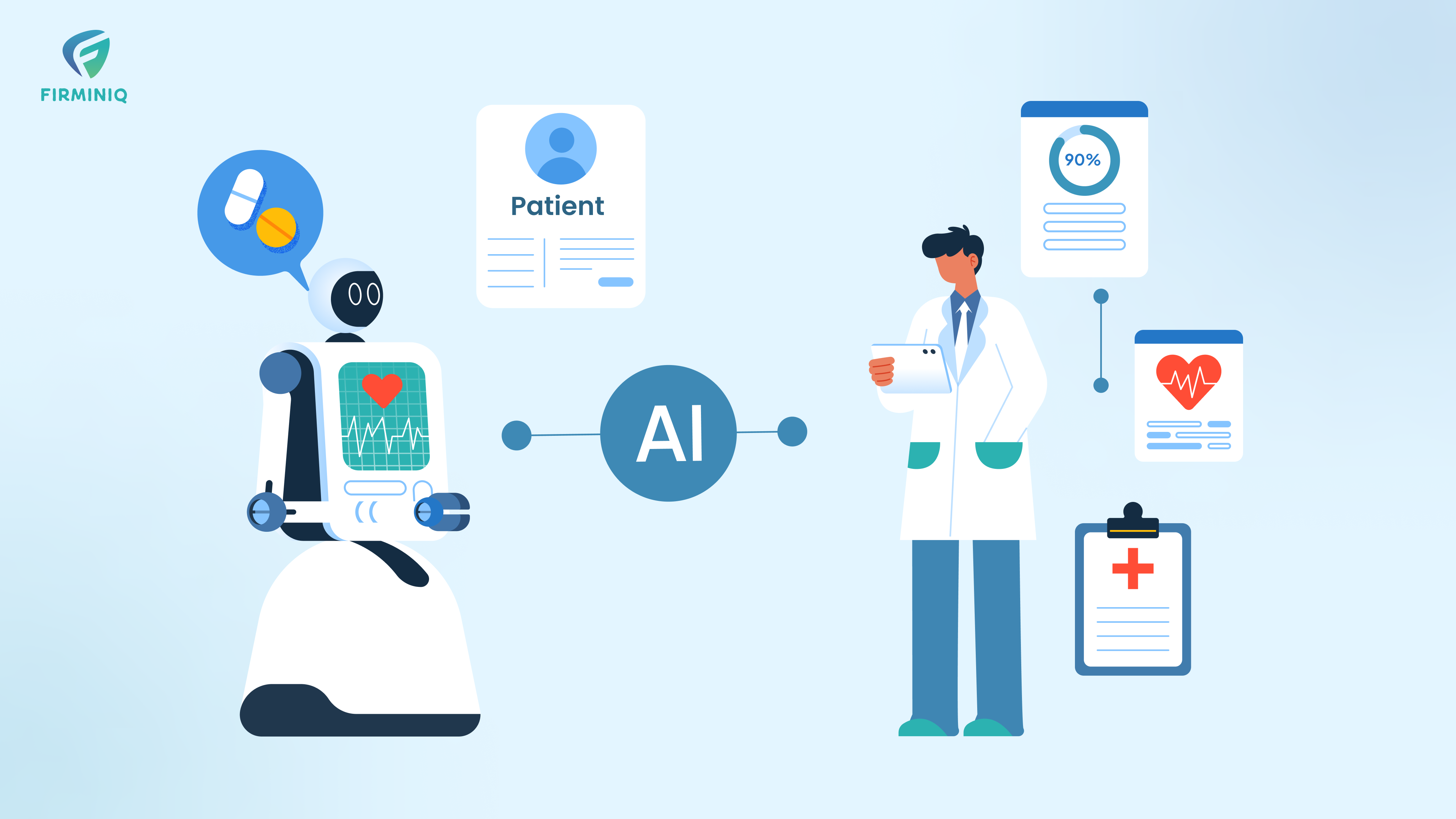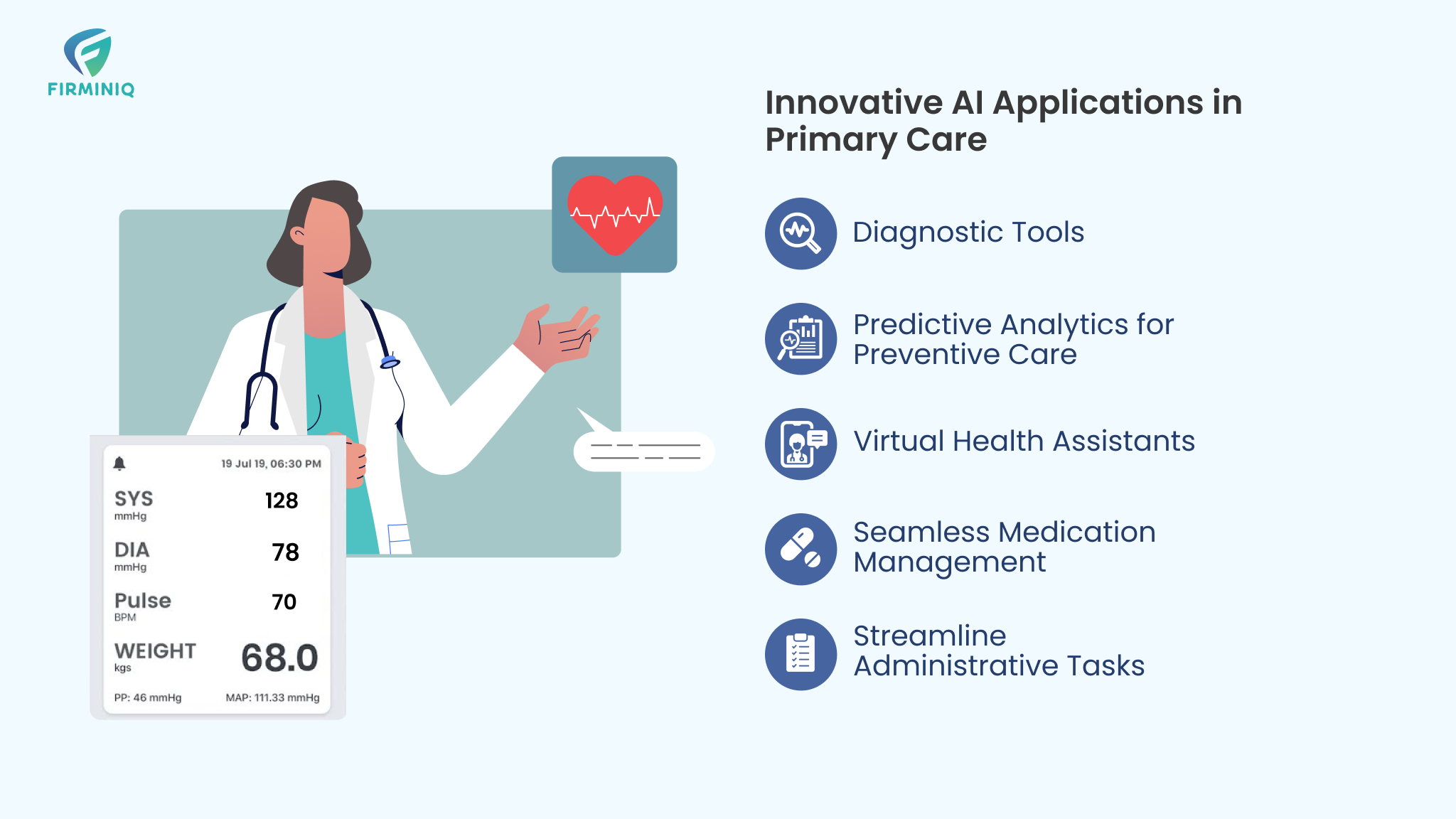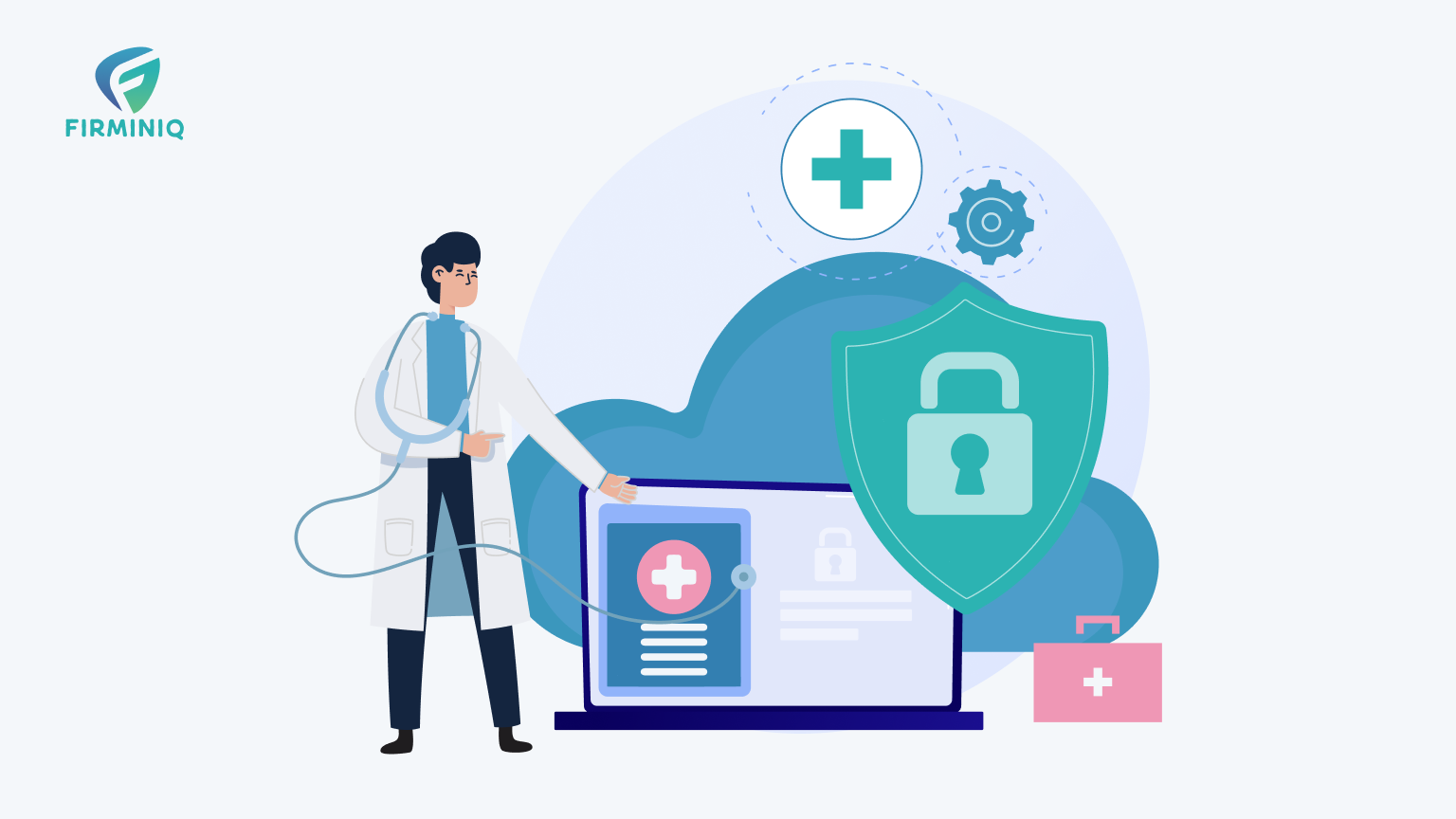As the first point of contact for patients, primary care plays a crucial role in addressing immediate health needs and managing long-term outcomes. However, increasing patient demands and resource constraints often challenge the quality-of-care delivery. AI is one of the breakthroughs, which transforms primary care by streamlining processes, enhancing the efficiency and quality of care across the healthcare domain.
As per Springer, AI-powered algorithms now surpass physicians in diagnosing various conditions, including skin cancer, breast cancer, colorectal cancer, brain cancer, and cardiac arrhythmias. For instance, the University of Iowa Health Care uses IDx-DR, an AI tool that detects diabetic retinopathy, helping primary care doctors identify this condition earlier and improve patient outcomes. These AI applications are beneficial in regions lacking specialist care, equipping primary care providers with advanced diagnostic capabilities.
From helping physicians make the right decisions to proactive patient monitoring, AI continues to transform care practices. In this blog, we’ll explore how AI’s real-world applications are transforming primary care, empowering doctors, and redefining what’s possible in modern healthcare.
AI’s Real-World Applications in Primary Care
Here are some of the real-world applications of AI that are driving the transformation in primary care.
1. Diagnostic Tools
AI-powered diagnostic tools help transform the way primary care physicians diagnose diseases. Using machine learning algorithms, AI analyzes medical data, like imaging scans, lab results, and the history of patients to identify patterns and make precise decisions. AI-based systems can assist in diagnosing conditions like diabetes, lung cancer, and cardiovascular diseases by rapidly assessing images and determining abnormalities to further examine the same.
For instance, ENDEX by Enlitic is an AI platform that is designed to revolutionize medical image analysis. Leveraging advanced deep learning algorithms, it helps analyze a wide range of medical images, like X-ray, CT scans, and MRIs, with precision and speed.
2. Predictive Analytics for Preventive Care
AI-powered predictive analytics allows primary care providers to offer proactive care to patients. It analyzes the patient’s historical data, patterns, and risk factors, that ultimately identifies those with a higher risk for conditions even before the symptoms appear.
BlueDot, a Canadian firm excels in predictive analytics and AI. BlueDot identified an unusual cluster of pneumonia cases in Wuhan and raised an alert nine days ahead of the WHO’s official announcement of the novel coronavirus.
3. Virtual Health Assistants
AI-powered virtual assistants offer real-time human-like responses and engage with patients by offering them support round-the-clock. Using natural language processing, it processes the user’s inputs and offers them responses. From understanding the patient’s queries to offering tailored responses, scheduling appointments, and offering follow-up care, virtual assistants can help with everything.
Woebot is an AI-driven mental health chatbot that uses principles of Cognitive Behavioral Therapy (CBT) to support users in managing issues like anxiety, depression, and stress. It engages in conversational therapy, providing users with tools and exercises to help navigate their mental health challenges.
4. Seamless Medication Management
Adhering to the medication schedule is vital for every patient, especially for the ones with chronic illnesses. AI-driven tools prove to be a game changer that improves the process of medication adherence for patients and ensures that personalized reminders are sent to them no matter where they are. These systems take into account patient preferences, medical history, and routines, minimizing missed doses and potential complications.
Pillo Health offers an AI-powered voice-activated pill dispenser that not only stores and dispenses medications but also provides personalized reminders. Its smart assistant uses facial recognition to confirm the correct user is taking the dose.
5. Streamline Administrative Tasks
Administrative tasks are time-consuming and heavily impact the efficiency of healthcare providers. AI has a significant impact on reducing the administrative burden on healthcare providers. From patient scheduling to documentation, billing, history, and more, all the admin tasks are seamlessly managed that allows physicians to focus on patient care rather than paperwork. It ultimately improves the operational efficiency and reduces the likelihood of errors.
One of the examples is Nuance’s Dragon Medical One, which is an AI-based voice recognition tool that helps streamline clinical documentation while enabling faster and more accurate patient records.
Transforming Primary Care: What’s Next?
Integrating AI in primary care is not only a technological advancement but rather a need that is redefining the patient-doctor relationship while reshaping the entire healthcare landscape. From early diagnosis to proactive intervention, AI’s real-world applications are empowering physicians to deliver faster and smarter care.
This is however just the beginning; the possibilities of AI are endless. The future of primary care lies in innovations while setting new standards and improving patient outcomes. Are you a healthcare organization that wants to integrate AI in healthcare? Reach out to us.







